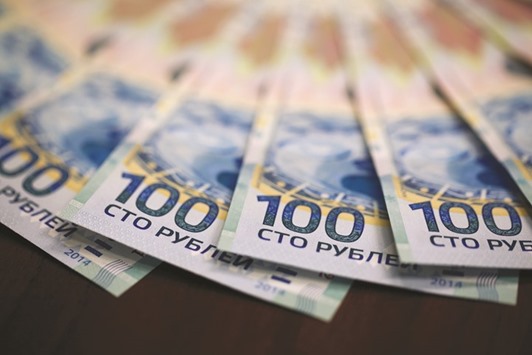Backing the rouble seemed like a lonely bet for Man Group’s Guillermo Osses five months ago, but now the strategy is paying off - and the rest of the market is racing to catch up.
The head of emerging-market debt strategy at the company’s Man GLG unit has been bullish on the Russian currency and local debt markets since at least February, arguing that stabilising oil prices would end the rouble’s slide and curb inflation in the world’s largest energy exporter.
Both those things happened, and a shift in speculative bets followed: hedge funds have been bullish on the rouble since late January, the longest streak in a year.
“The combination of carry, currency appreciation and capital appreciation is possible even after the run that local currency denominated assets have had since February,” said Osses, who works in an investment unit of the world’s largest publicly-traded hedge fund firm.
The New York-based money manager was an early entrant into what became the world’s best currency rally, with a call around the time the rouble traded near a record low.
Back then, Russia’s oil-dependent economy was financing itself through a combination of central-bank loans and draining its sovereign-wealth fund because international sanctions curtailed its access to foreign capital markets.
The rouble has gained 21% since the start of February, the most among 150 currencies tracked by Bloomberg, and is up 34% from its all-time low of 85.999 per dollar on January 21. Dollar-funded carry trades buying roubles have earned 26% since February 1, also the most in the world. Even after a 0.5 percentage- point cut in June, Russia’s main interest rate is 10.5%, compared with close to zero in the US.
“I see more room for the rouble to appreciate on the back of oil recovering back up to around $50 per barrel,” said Per Hammarlund, the chief emerging-market strategist at SEB SA in Stockholm. “The current attractiveness of the rouble is based on oil having stabilised and the currency’s high carry.”
Others see the rouble’s world-beating rally as short-lived. After climbing from about $27 a barrel in January to above $50, Brent now dipped back below that level amid speculation the UK’s Brexit vote will sap demand, even as producers continue to flood the market.
Landesbank Berlin Investment money manager Lutz Roehmeyer, who stocked up on rouble assets in April, has now become cautious because he says the oil rally is ending. The median of 35 forecasts in a Bloomberg survey sees the rouble sliding about 5% to 67 per dollar by the end of the year.
Yet hedge funds and other large speculators have been long on the rouble for 25 weeks and are about the most bullish since February 2013, according to the Commodity Futures Trading Commission in Washington.
Domestic signals point to recovery and more stability: Russia’s economy is expected to emerge from a two-year recession while the nation’s central bank resumes rate cuts after almost a year to reignite growth.
Implied six-month rouble volatility - a measure of anticipated price swings - has fallen to about 18%, the lowest level in a year.
“Russia is one of the places where we find attractive local rates, and it’s one of a handful of markets where we have local rate exposure,” said Morgan Harting, a senior portfolio manager in New York at Alliance Bernstein Holding, which oversees $487bn. “You have room for capital appreciation on top of the interest-rate difference, and this is attractive as we’re in a muddle-through economic environment across the globe.”

The implied six-month rouble volatility, a measure of anticipated price swings, has fallen to about 18%, the lowest level in a year
